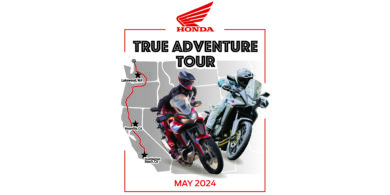Feb. 9, 2009 – Squeeze the spending, expand the profit
With consumer spending tightening over the past few months and little optimism for a sudden rebound in the first quarter, many dealers are likely to face a similar question in 2009: How do we improve the bottom line this year without making a large capital investment?
Powersports Business posed that question to a number of dealers across the nation. Here are their responses, both in what they hope to achieve and how they plan on doing it.
Get on the phone
The goal — Irv Fosaaen, the owner of metric and Harley-Davidson dealerships, has reacted to reduced consumer traffic by requiring his salespeople to be more active in calling past clients. “When times are really tough and things are slow, you need to crank up your sales effort,” he said. “It’s going to cost a little more money, but I would hire some more entry-level salespeople to go through and call everybody we’ve done business with in the past few years and try to shake the trees and find more business.”
The plan — For this plan to work, dealership personnel have to be realistic of the likely results. “If you make 50 phone calls, you might get a hold of 20 of them,” Fosaaen said. “Out of that group, maybe get four or five to promise to come in and half of them actually will come in.” Using that process, Fosaaen believes a salesperson can generate at least an additional 4-5 new unit sales per month. “A salesman that can generate at least 4-5 sales per month is worth having around,” he said. One key part of the plan: Sales staff should get work or cell phone numbers to get in touch with consumers during the day, rather than at night. Fosaaen has used this process at his stores and his sales for October and November were up year-over-year.
More PG&A, fewer new units
The goal — Jared Burt, co-owner of Rexburg Motor Sports in Rexburg, Idaho, has expanded the store’s parts and accessories showroom. “With the downturn economy, we decided we could spend a little bit and offer more to customers who are going to keep their machines for another year, because that’s what we’re seeing,” he said.
The plan — Burt says the store created the additional PG&A showroom space by slightly cutting down the number of new units on display as well as significantly reducing its PG&A storage space. Burt notes the change was not costly. “We definitely aren’t going to add on to the building,” he said, citing the current consumer spending patterns. Burt says the dealership did not invest in any new parts or accessories lines but ensured the product they are carrying is fresher. Plus Rexburg will now display more of the product they are carrying. Burt also notes the reduction in new units on the showroom was slight, so slight that consumers likely won’t notice a difference.
“Payables party”
The goal — Reduce overall dealership spending by carefully analyzing spending in all departments. This is a practice that Clark Vitulli, part owner of Harley-Davidson of St. Augustine in Florida, has done routinely, both this winter at the Harley dealership as well as before as CEO of America’s PowerSports, the national dealership group.
The plan — Vitulli advises dealer principals or general managers to meet with all of their department managers, including the office manager, and go over the past 30 days worth of bills. “Go over every single one of them,” Vitulli said, “and ask two questions, ‘Do we need this?’ If the answer is yes, then ask, “Can we get it for less?”’ Vitulli notes this type of meeting can be timely, often taking up to two hours. But it also can generate some savings in the slow winter months. “Ask your people and see what they say,” he said.
Focus on the sales department
The goal — Jimmy Allison, the owner of both metric and Harley-Davidson stores in New Mexico, notes he has maintained a full sales department staff even as consumer spending has tightened. “I think that’s where the biggest ability is to move the needle and create the most dollars,” Allison said of the sales staff. “Our traffic is not down. What is down is our ability to get people committed, to write ‘em up.”
The plan — Allison is ensuring he has the necessary staff so that each salesperson has the necessary time to talk about the fun of riding with every consumer who walks into the dealership. “This is what I want that guy to understand when he leaves the showroom and he doesn’t buy anything: We want to sell you a bike; we want to be your dealer; this is the center of the fun world of motorcycling,” Allison said. “Those are the three things I want him to understand when he leaves.”
More orders, more cash flow
The goal — To free up cash flow by stockpiling fewer parts and accessories. To do this, a dealership must work with its distributors to increase the number of weekly shipments and manage freight charges, says Gordon Inglis, president of Inglis Cycle Center, London, Ont.
The plan — Inglis’ store has worked with its distributors to do stock orders every second day, rather than rely on big initial orders. “We’re not carrying the same number of batteries, the same number of tires to get the deals,” Inglis said. “We’re able to work out a program this year that instead of placing big, big winter orders we’ve actually pulled back on our winter orders. It does hurt some of our smaller suppliers for our business, but we’re not having to stockpile so much of the product to get the deals.”
Capturing the online consumer
The goal — Rick Nakagaki, chief operations officer of Eastside MotoSports in Bellevue, Wash., says the dealership is striving to do more with its online presence. “We’re trying to make the Internet more of a storefront and our storefront more of a warehouse,” he said.
The plan — Eastside has a full-time marketing/media person that is working on the store’s Web site. The store also has invested in additional Web site enhancements, online advertising and e-mail in its quest to add store traffic through the Internet.
The time is now
The goal — Using the dealership’s new unit sales database, contact consumers who purchased new motorcycles in past years and alert them of the current sales. This is something Greg Mackey, president of Cycle Central, says his staff has done in recent months. “We’ve had had some pretty good results,” he said.
The plan — Dealership staff has focused on consumers who purchased new bikes from 1-3 years ago, knowing these consumers are on average good trade-in possibilities. Mackey says staff at Cycle Central’s eight stores in Georgia and Florida have tried to turn the economic challenges into a positive for the consumer. “The message to the consumer has been: The right time to buy is now because there are deeper discounts,” Mackey said. Mackey notes this has been a key undertaking as dealership staff is trying to reach everybody who has purchased a new bike in that time period.
make it more of a meeting place
The goal — Step up efforts to get consumers active in the sport by having your dealership become more than just a retail outlet, but a meeting place for the core enthusiasts. That advice comes from Jeff Nash, part owner of Ducati Dallas.
The plan — Nash believes dealerships need to increase their touchpoints with consumers in the coming year. “The bottom line is everybody has something to worry about,” he said, referring to the U.S. economy. “You have to put that aside and use the opportunities to enjoy each other’s companies and remember why you’re a motorcyclist.” Nash’s stores have used such opportunities — track days, GP-watching parties, Thursday-night rides — to become the No. 1 North American Ducati dealer in terms of retail sales. “Nothing that costs too much to do,” Nash said of the dealership events, “but just involves the customer and gets them back in the store to have some fun with their motorcycle.”








